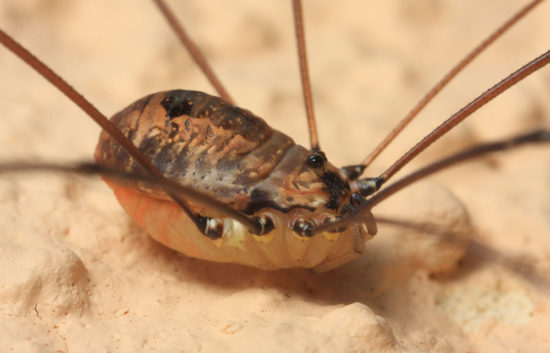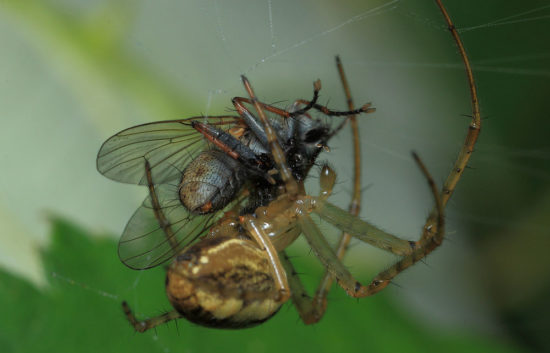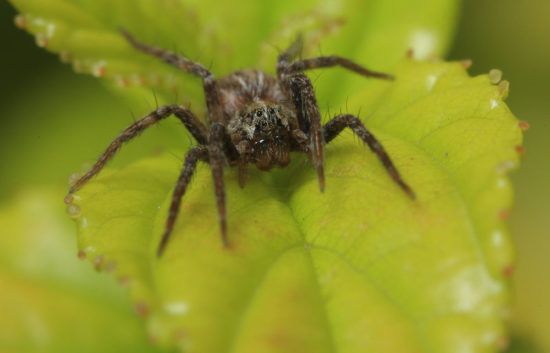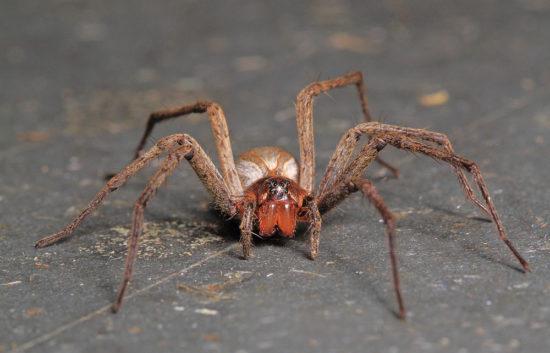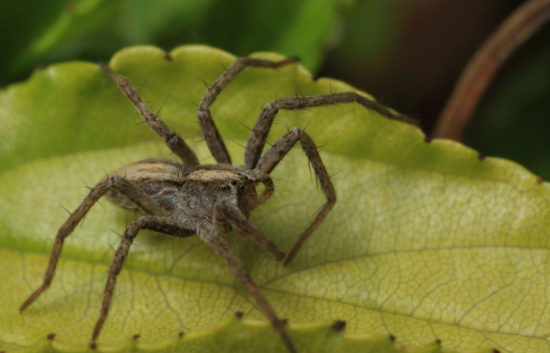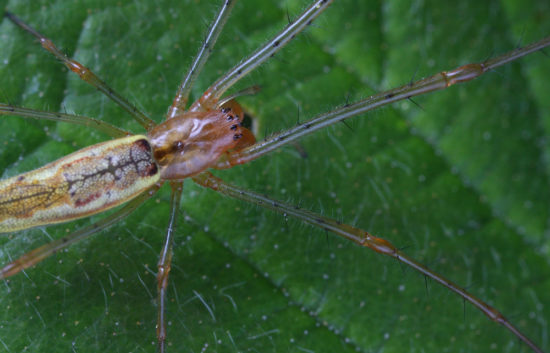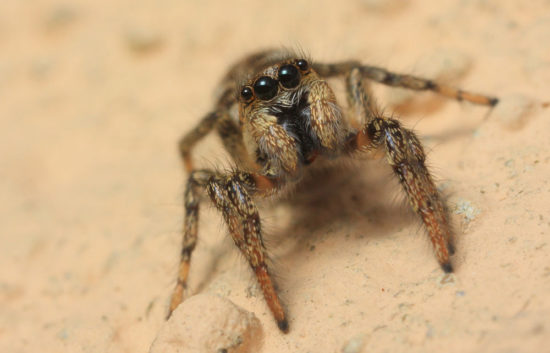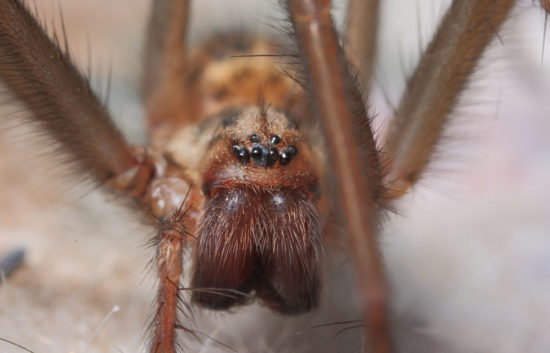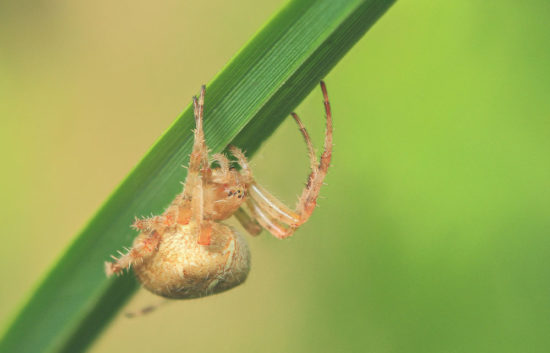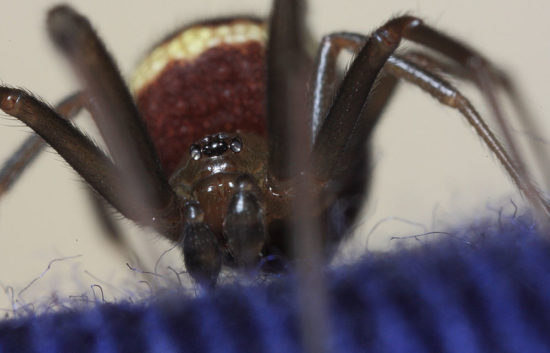Opiliones is a an order of arachnids commonly known as harvestmen. However, their phylogenetic position within Arachnida is disputed: the closest relatives may be the mites (Araci). They can be easily distinguished from even the long legged spiders by their...
1. The spider bites the fly and starts to wrap it in silk, wait for it to die, then begin to eat it. As a first step in eating the spider will literally vomit digestive fluid over the fly. 2....
Named for their swift motion, particularly while attacking prey, the wolf spider can sometimes be seen scurrying across open surfaces. Anatomy: All spiders have in common a two-segmented body, eight legs, spinnerets and the absence of chewing mouthparts or wings....
The Raft Spider is a large, rich chocolate-brown spider, with a pale yellow stripe running down each side of the body. It is a chunky spider that lives around the edge of ponds and swamps. Adults sit at the edge of...
The Nursery Web Spider is a relatively large, slender-bodied spider, pale grey-brown with a pattern of darker brown and black stripes running the length of the body. It is a common spider of grassland and scrub, and is often seen sunbathing...
Long-jawed Orb-weaver Spiders, sometimes called Common Stretch Spiders spin an orb web to catch their prey. They’re usually found in vegetation close to ground level and frequently close to water. The elongated body can vary in colour from creamy-yellow to...
The Salticidae are without doubt, the most appealing of spider families and their charming and charismatic nature, make them a natural favourite for photographers. Their often small size and frequent variation in markings, do make them a little tricky to...
The house spider (Tegenaria domestica) is probably the best known and perhaps the most hated of the British spiders, and is often encountered trapped in the bath. The house spider is fairly large and hairy with long legs. It varies...
The orb-weaver spiders (family Araneidae) are the builders of spiral wheel-shaped webs often found in gardens, fields and forests. Individual spiders can range from light yellow, to orange-brown or dark grey, but all European garden spiders have mottled markings across...
The abdomen of this false widow is a red-brown colour with a crescent shaped stripe at the front and three pale triangular spots along the top. These markings vary from spider to spider. Sometimes they’re cream coloured and sometimes they’re...

